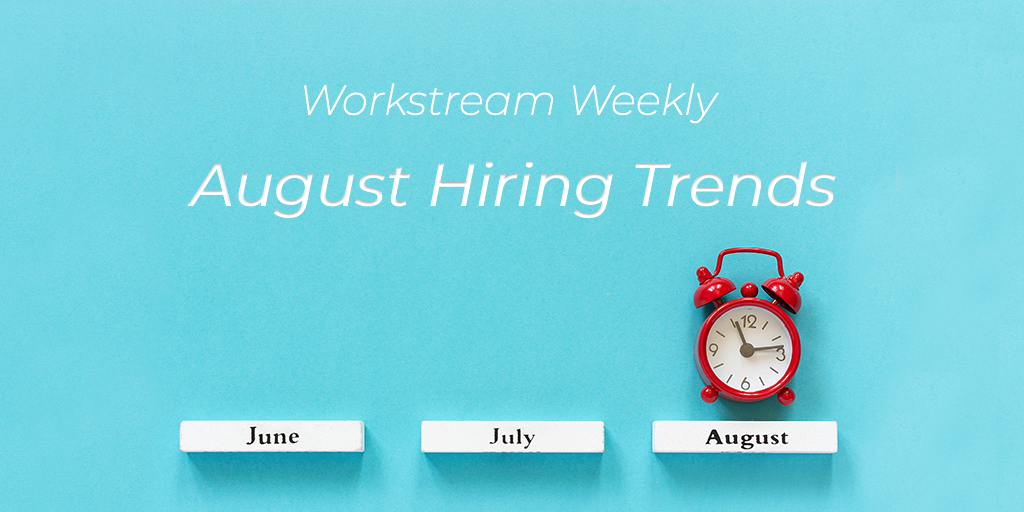A year into the Covid-19 pandemic, many organizations are going into mass hiring, in preparation for reopening. Many businesses have been severely impacted, and had to adapt and pivot their business models to meet the changing consumer demands as a result of heightened safety measurements and fears of the virus.
The Quick Service Restaurant (QSR) industry was not spared - from the prohibition of on-premise dining to a 21.2% year-on-year decline for sales in F&B in 2020, and even the impending hiring crisis. With these challenges came a need to revisit their business strategies, which was mostly fueled by the adoption of digitization.
Based on Panasonic's survey of 150 food services and food retailer decision-makers, 100% of those surveyed reported that the pandemic has intensified their sense of urgency to adopt transformational technology. 71% stated that digital transformation is far more important than any other factor, for business agility.
Here are several key learnings about how Covid-19 has spurred digitization, with real-life case studies of restaurants that have taken it in their stride, and utilized technology trends to drive sales and recruitment. These learnings could also be incorporated into the context of your own QSR, and we hope that they'll inspire you to take a step towards digitization.
Reducing Interaction and Contact
In light of the increase in safe-distancing measures, more emphasis is placed on limiting social contact in order to create a more Covid-19-safe environment. Many QSRs have thus restructured or rolled out new strategies to tap into a wider market, while also reassuring customers that they will be safe.
Drive-thru lanes
As customers are wary of entering restaurants, Covid-19 has opened up a significant market for drive-thru orders. Large QSRs such as Chipotle and McDonald's are rolling out drive-thru lanes, to encourage digital orders. Chipotle created its 100th Chipotlane, in hopes of serving its mobile-order customers more quickly. McDonald's is even going the extra mile by investing more than $300 million in artificial intelligence in hopes of spurring more spend while customers visit their drive-thrus.
Delivery and curbside pickup
For smaller QSRs who may not have the capabilities or resources for drive-thrus, delivery and curbside pickups are a great alternative, which opens up the business to a wider market, especially with dine-in restrictions. Additionally, since customers are increasingly busy, with less time in between their commute or lunch breaks, they may also choose to eat on the go, making this a much more convenient option for them.
By exploring avenues that allow customers to pre-order their food and drop by to collect the food only when it's ready, wait times are reduced, and order accuracy is increased. QSRs can thus effectively cater to this segment in the market.
Digital menus and contactless payment
Menus are often passed through many hands throughout the day and could be a potential source of virus transmission. Additionally, 82% of consumers worldwide view contactless payments as a cleaner way to pay', with 74% opting to continue their use of contactless payment post-pandemic.
Many restaurants are investing in contactless payment solutions, through QR codes, and even tableside ordering technology. Provide customers with a platform to view the menu, place their order, make payment, and leave feedback, all in one place with services such as GoTab, that offer contactless ordering via a QR code.
Spurring Online Purchase
Customers are increasingly turning to their mobile devices to make orders, especially with the rise of mobile applications and online delivery. Many brands have leveraged this trend to spur online purchases, through the following:
Creating brand-specific mobile applications and promoting them
Americans increasingly downloading mobile applications for online shopping and food delivery creates an opportunity for third-party delivery apps like DoorDash, Uber Eats, and more. But this doesn't mean brands can't create their own mobile applications too especially since 80% of people surveyed by Market Force Information are turning to brands they trust during the pandemic when making restaurant purchases. Further, 43% have ordered from fast-food applications in the past six months, which highlights the importance of a mobile ordering platform, especially during these times.
That being said, Domino's has proven to be a successful business case with their strong mobile application, as digital sales account for more than 80% of their sales. They have also increased their ad spend by 9.7%, while Papa John saw a 48.3% increase.
Tapping on social media
Bottle Rocket, a digital experience consultancy firm, conducted a consumer study with 500 participants, of which 47% of respondents indicated that they prefer to receive information about their favorite QSR through social media. QSRs focusing on social media have reaped the fruits of their labor with a significant rise in engagement and conversions.
This is highlighted with Chick-fil-A driving the highest volume of paid media engagement last year, through their animated holiday film, 'Spark Home' and 'Light the Way'. Wendy's saw the greatest conversions with their ads promoting their 4 for $4 offer, which boasted the highest volume of engagements in the reporting period.
Other examples of successful social media campaigns include Dunkin' collaboration with Discovery Channel to raise awareness for Shark Week - where the winning content entries were then highlighted on their digital billboard in Times Square. Domino's coupon campaign was well-received with over 8,000 shares and 20,000 entries.
Improving Customer Experience
With customers mostly relying on technology, and their inclination to contactless solutions, how then have QSRs leveraged this to improve the customer experience?
Text ordering and marketing integration
QSRs are building relationships and customer loyalty by changing the way they interact with their customers. Consistent communication is key, and the most effective way to do so is utilizing what customers use the most - their mobile devices. This allows QSRs to communicate with customers from the second they visit their mobile application, all the way to when the delivery driver drops the food off at their doorstep.
Text messaging ordering makes it easier for customers to order and brings an added personal touch to the table. Geo-targeted messages can be sent, increasing the chances that customers will redeem offers sent to them, or save their previous orders for next time. Alerts could also be sent to inform customers that their orders are ready to be collected, or have arrived at their place. This simplifies their ordering process, and saves time, creating a seamless experience that translates to better customer satisfaction.
Research by smscomparison has also shown that 75% of customers want offers to be sent to them via text message. These communication tools can be integrated into the QSR's mobile application. It is an opportunity to collect valuable customer insights, such as their preferences and orders, which can be used to generate future sales through better recommendations.
Upgrading their mobile application
There is a need to constantly review and improve your mobile application, to stay relevant to changing demands. It doesn't end after the application has been created. Dunkin' added a curbside service function to their mobile application at 1,400 locations to address the preference for such a service. White Castle, an Ohio-based burger chain, has also included a new loyalty program, dubbed "Craver Nation", to encourage application sign-ups through free meals and deals.
Recruitment
The previous sections went through how QSRs leveraged digitization to boost demand, but how have they utilized technology to change their hiring processes?
Hiring remotely
Although this concept existed pre-Covid-19, it is the norm now, as both applicants and interviewers have their guards up and hope to minimize physical interactions where possible. This gave rise to virtual interviews, where brands, such as A&W, can get interviewees to submit video resumes which reduces screening times and instances where both parties have to meet in light of safe-distancing measures. Only candidates who have passed through this initial round of screening will be scheduled for a final round which constitutes the physical interview.
Additionally, mobile training materials make it easier for onboarding to happen online. Recruiters can now send handbooks, checklists, and even training videos via a text message link for all employees to access at their convenience. SMS reminders will also be sent to candidates, to guarantee completion.
Handling large volumes of applicants
Many QSRs are preparing themselves for a sharp increase in demand as the economy reopens, by running massive hiring campaigns. Papa John's and Chipotle are both pledging to increase their headcount by tens of thousands, to support their delivery and takeaway services.
It is thus necessary to have recruitment tools made to handle large volumes of applicants. Envoy America hires up to 980 candidates in a year through a streamlined applicant dashboard, automated messaging, and customized screening process.
With all applicants appearing within the same dashboard, recruiters were able to access applicants across different job boards. Automated scheduling also improved their reply rates as applicants are able to schedule their interviews based on pre-allocated slots in the recruiter's calendar. Reminders are also sent to applicants prior to the interview, with an option to reschedule if necessary, reducing ghosting. Finally, customized workflows allow the recruiter to set hiring parameters, thus saving time on screening as applicants will not make it through to the next round should they not fulfill any of the important criteria.
To Wrap Up
Now that you've seen how QSRs have embraced and adopted digitization to improve their processes in one way or another, have you decided how you'll incorporate these into your own QSR?
It may seem overwhelming but the desire to take the first step is a great start. We're more than happy to provide personalized insights on how you can power up your QSR with tech trends. Schedule a chat with us to find out more!




